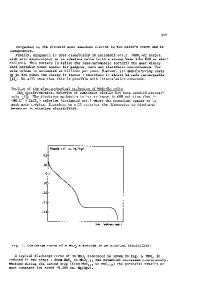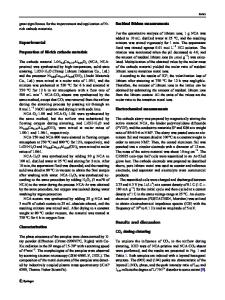Advanced cathode materials for lithium-ion batteries
- PDF / 1,067,750 Bytes
- 8 Pages / 585.071 x 782.929 pts Page_size
- 83 Downloads / 380 Views
Introduction A robust modern economy mainly depends on low-cost, sustainable energy. Currently, the world’s energy supply is primarily centered on non-renewable fossil fuels.1 The energy dilemma facing the world is twofold: global warming from greenhouse gas (CO2) emission and vulnerability from dependence on depleted supplies of oil. It is projected that world energy consumption will double within the next 50 years, concomitant with worldwide oil production, which will level off in the near future. Moreover, changes in the global economical and political situation inevitably add uncertainty and stress to the world energy supply. An urgent need therefore exists for systematic technological breakthroughs and developments emphasizing energy generation and utilization in order to reduce our reliance upon fossil fuels and to protect the environment. Recently, scientists at Lawrence Livermore National Laboratory published a report on energy consumption that showed that the transportation sector used 71% of the overall petroleum consumed in 2008 in the United States.2 Because of similar concerns, a worldwide effort has been devoted to developing advanced energy storage technologies for electrification of the transportation system, with the goal of significantly reducing the consumption of fossil fuels. In addition, the development of a low-cost and reliable battery system is critical to enable the utilization of renewable
energy sources such as solar and wind energy, whose production period (mostly day time) is separate from the peak consumption period (mostly night time). After a decade of research, several lithium-ion couples, such as graphite/nano-LiFePO4, nano-Li4Ti5O12/Li1+xMn2–xO4, and graphite/Li1+xMn2–xO4,3,4 have been reported to meet the requirements for hybrid electric vehicles (HEV).5 All of these technologies offer high power but limited energy densities, making them inadequate to power pure electric vehicles (EVs) or plug-in hybrid electric vehicles (PHEVs) with an electric drive range of 40 miles. Alternatively, cathode materials made of lithium-rich transition metal oxides with composite structures (xLi2MnO3•(1–x)LiMO2, M is a transition metal or a mixture of transition metals)6,7 or lithium-rich cathodes (Li1+xM1–xO2, M is a transition metal or a mixture of transition metals)8,9 offer both higher specific capacity (>200 mAhg–1) and higher working potential (>4.3 V versus Li+/Li). In exchange for their high-energy densities, however, these cathode materials, still in the process of development, require more work to increase their tap density—the amount of material that can be loaded in a specific volume—and to improve their power performance. In addition, this class of materials exhibits capacity fade (or gradually reducing capability to store energy) during cycling or storage at elevated temperatures due to the chemical reaction
Zonghai Chen, Argonne National Laboratory, Argonne, IL 60439, USA; [email protected] Dong-Ju Lee, Hanyang University, Seoul 133-791, Republic of Korea; [email protected] Yang-Ko
Data Loading...











